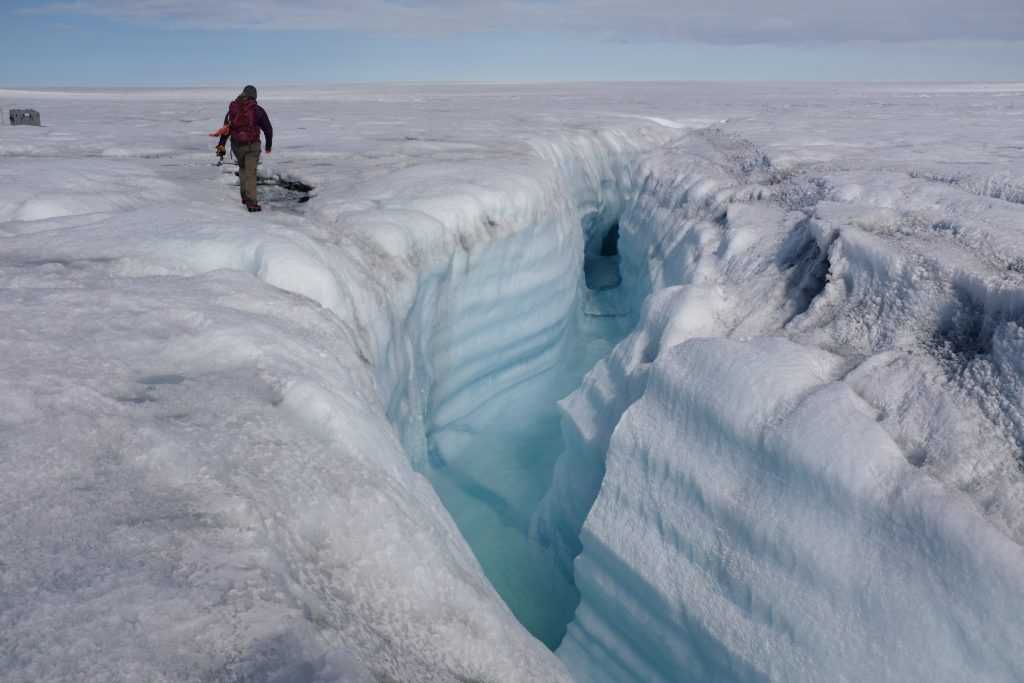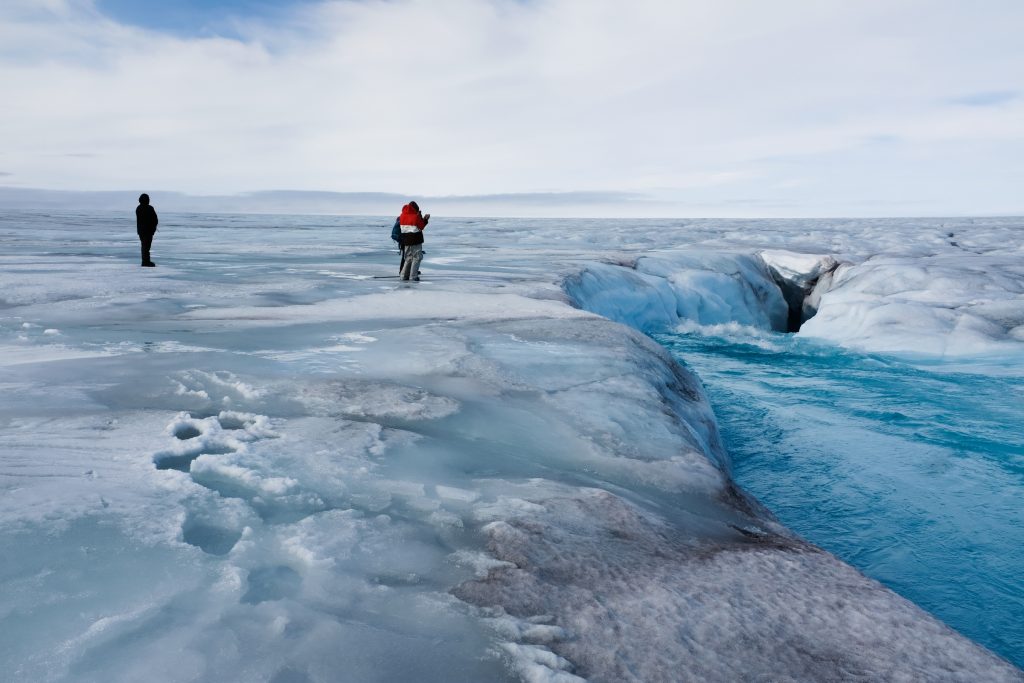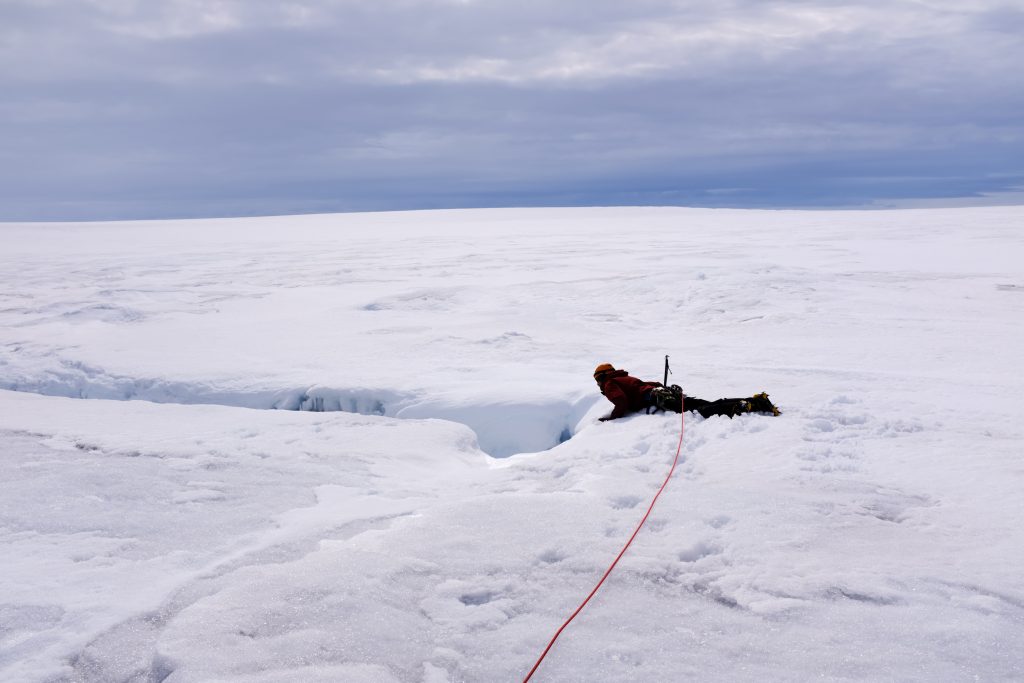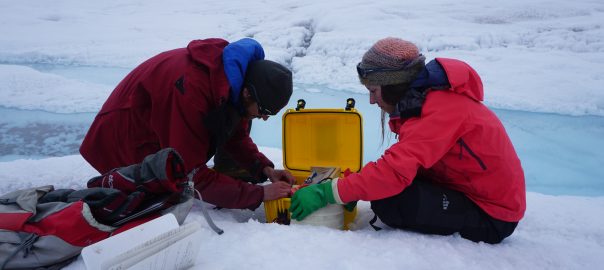I’m a hydrologist specialized in karst and glaciers. Kristin Poinar adopted me as a student for one year while my advisor (Matt Covington at the University of Arkansas) is in a sabbatical in Slovenia. For my PhD, I explore the hydrology of the Greenland Ice Sheet, which is strikingly similar to karst environment, but with much more rapid dissolution timescales. My focus is on the moulins and how they interact with the surface stream to bring the water in the englacial and subglacial portion of the ice sheet or how in the supraglacial environment, drainage basin properties impact spatial and temporal water inputs.
During my year at UB, I will combine a subglacial channel model (Schoof 2010) and a moulin model (Kristin Poinar and Lauren Andrews at NASA) and observe how moulin shape evolve during the melting year and its integration with the subglacial drainage.

Tools
I use simple models written in Python and Matlab, and I’m aiming take part to the modeling community by making my models shareable and accessible.
Fieldwork
As part of the Project MoVE founded by NSF, we collected water level data in moulin and ice motion data in the Paakitsoq region in West Greenland during three years. Instrumenting a moulin is a fun but daunting task, requiring to camp for weeks on the glacier and drag hundreds of meters of armored cable across the ice.

Media: New York Times
George Steinmetz of the New York Times photographed one of the streams next to one of the GPS stations:
https://www.nytimes.com/2018/09/30/learning/whats-going-on-in-this-picture-oct-1-2018.html
Media: Documentary Video
Jonathon Carlson recorded and produced the above video on the team’s field expedition to Greenland.
Carlson, Jonathon Nugent, “Moulins: Down the Arctic Drain” (2018). Theses and Dissertations. 2784. https://scholarworks.uark.edu/etd/2784

First Thesis Chapter in Writing
For the first chapter of my thesis we simulate how vertical change in moulin cross-section area impacts channel subglacial water pressures with a one dimensional mode simulating a moulin connected to a subglacial channel that can creep open when the water level is high in the moulin and close due to the weight of ice thickness.
So far, most models used to simulate the interaction between ice motion and water level consider that moulins are cylindrical, but in reality they are not. In this model based study we show that non-cylindrical moulins have actually an impact on how the water level fluctuate in the glacier, and that is it really at the upper portion of the glacier that the shape matters, where the water level oscillate.

